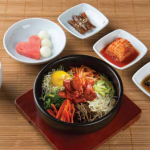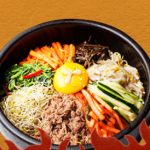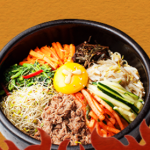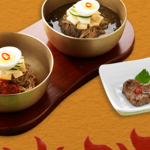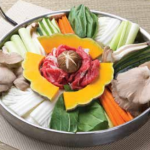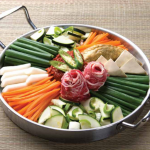Cooking is an art, my friends. And when it comes to preparing traditional Korean dishes, it’s like creating a symphony of flavors in your mouth. If you’re a food enthusiast like me, get ready for a hilarious and informative journey through the techniques and methods that make Korean cuisine so lip-smackingly delicious!
Introduction: Welcome to the Korean Kitchen Circus!
Step right up, ladies and gentlemen! Enter the wild and wonderful world of Korean cooking, where flavors dance and spices sing! If you’re ready to break free from your culinary comfort zone and embark on a tongue-tingling adventure, fasten your seatbelts and prepare your taste buds.
Korean cuisine is renowned for its tantalizing flavors and hearty dishes that make your heart skip a beat. From fiery kimchi to soothing bibimbap, get ready to unravel the secrets of mastering these traditional Korean delights. But hey, who said we can’t have some laughs along the way? Grab your apron and let’s dive in!
The Art of Traditional Korean Cooking: No Laughing Matter!
1. Salting like a Pro
Salt, the silent hero of cooking! In Korean cuisine, salting is done to draw out moisture, enhance flavors, and make your taste receptors high five each other in excitement. It’s like a game of ‘pass the salt,’ but with a touch of elegance.
2. Fermenting Fun
Don’t be alarmed by the pungent aromas creeping from your kitchen corner; it’s just fermentation doing its magic! Koreans love fermenting, from kimchi to soybean paste, giving their dishes a depth of flavor that will blow your mind. The longer it ferments, the funkier it gets!
3. Sizzling and Stirring
Hold onto your hats, folks, because Korean cooking knows how to make a pan dance! Stir-frying is a common technique used to cook ingredients quickly and retain their texture and vibrant colors. If you can keep up with the fast-paced sizzle, you’ll achieve taste bud triumph!
4. Braising Brilliance
Low and slow is the Korean way! Braising is the technique where meat and vegetables simmer in a reduced sauce until they become meltingly tender. It’s a bit like caring for a newborn baby; the longer you nurture it, the more magical and flavorsome it becomes!
Conclusion: It’s Time to Unleash Your Inner Culinary Comedian!
Congratulations, my fearless foodies! You’ve journeyed through the whimsical world of traditional Korean cooking techniques and lived to tell the tale. Now, as you stand tall in your kitchen, armed with knowledge and a little pinch of humor, it’s time to channel your inner culinary comedian and start creating your Korean masterpieces.
Remember, cooking is all about having fun and experimenting. So don’t be afraid to sprinkle a dash of laughter into your culinary adventures. Now go forth, conquer those traditional Korean recipes, and make your taste buds tango in pure delight!
FAQs (Frequently Asked Food-Loving Questions)
Q1: Can I replace fish sauce in Korean dishes with soy sauce?
A: While soy sauce is a fantastic alternative, fish sauce showcases a unique umami flavor that soy sauce cannot replicate. However, if you’re vegetarian or allergic to fish, feel free to substitute it with a vegetarian fish sauce or a combination of soy sauce and seaweed for that oceanic essence!
Q2: My kimchi turned out super spicy! Is there anything I can do to tone down the heat?
A: Oh no, someone’s breathing fire! Don’t fret. To tame the spicy beast, mix your kimchi into a calming stir-fry or noodle dish. The added ingredients will absorb some of the heat, making the dish milder and more manageable for your unsuspecting taste buds.
Q3: What’s the secret to achieving perfectly crispy Korean fried chicken?
A: Ah, the golden crown jewel of Korean cuisine! To achieve that coveted crispy exterior, double-frying is the way to go. Once the chicken is cooked through, fry it again for a shorter time at a higher temperature. Bask in the glory of the crunch!
Q4: Are Korean cuisine and K-pop related?
A: Though both are beloved representatives of Korean culture, K-pop and Korean cuisine reside in different realms. While K-pop brings melodic joy to your ears, Korean cuisine steals the spotlight to tantalize your taste buds. They stand side by side, each with its place in embracing the rich tapestry of Korean culture!
Q5: I’m not a fan of spicy food. Is Korean cuisine still for me?
A: Fear not, my friend! While Korean cuisine does have a fiery side, it also boasts a wide variety of non-spicy dishes. Classic examples include bulgogi (marinated grilled beef) and japchae (stir-fried noodles with vegetables). There’s something for everyone in this flavor-packed wonderland!
So there you have it, my fellow food expeditionists! Now that you’ve armed yourself with the techniques and secrets of Korean cooking, it’s time to unleash your culinary creativity and bring the joyous flavors of Korea into your homes. Get ready to dance with ingredients, laugh at your kitchen mishaps, and savor every bite of the delicious traditional Korean dishes you create. The culinary world is your stage, so go shine like a true mukbang superstar!
Stay tuned for more laughter-filled food adventures from around the globe. Until next time, happy cooking, or as our Malay friends say, “selamat memasak”!

